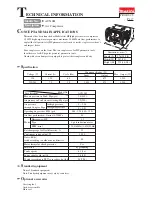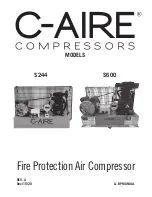
PKA 20-Li A1
GB
│
MT
│
43
■
Maintenance, storage and
cleaning
WARNING! RISK OF ELECTROCU-
TION! Before cleaning, disconnect
the charger from the mains socket.
NOTE
►
Before carrying out any work on the appli-
ances, ensure that the battery pack
has
been removed. This prevents the appliance
from being switched on unintentionally.
■
The cordless appliances are maintenance-free.
■
The appliances must always be clean, dry and
free from oil or grease.
■
Never allow liquids to get into the appliances.
■
Use a soft cloth to clean the housing. Never use
petrol, solvents or cleansers which can damage
plastic.
■
Always ensure the appliances and attachments
are clean, free of dust and dry before storing.
■
If you do not intend to use the appliances for a
longer time, remove the batteries and store them
in a clean, dry place away from direct sunlight.
■
If a lithium-ion battery is going to be stored for
an extended period, the charge level should be
checked regularly. The optimum charge level is
between 50% and 80%. The optimum storage
environment is cool and dry.
■
Never try to repair damaged batteries. Batteries
should only be maintained by the manufacturer
or an approved customer service centre.
NOTE
►
Replacement parts that are not listed (such as
batteries, chargers) can be ordered via our
Service Hotline.
Disposal
The packaging is made from environ-
mentally friendly material and can be
disposed of at your local recycling
centres.
Do not dispose of power tools
in the normal domestic waste!
European Directive 2012/19/EU
requires that worn-out power tools
be collected separately and recycled in an environ-
mentally compatible manner.
Do not dispose of batteries in
your normal household waste!
Defective or worn-out rechargeable
batteries must be recycled according
to Directive 2006/66/EC. Take the
battery pack and/or the appliance to a nearby
collection facility.
Please contact your local authority or town council
for information about disposal options for used
power tools/battery packs.
Dispose of the packaging in an
environmentally friendly manner.
Note the labelling on the packaging
and separate the packaging material
components for disposal if necessary. The pack-
aging material is labelled with abbreviations (a)
and numbers (b) with the following meanings:
1–7: plastics, 20–22: paper and cardboard,
80–98: composites.
Your local community or municipal
authorities can provide information on
how to dispose of the worn-out product.
Summary of Contents for PKA 20-Li A1
Page 3: ...A...
Page 52: ...PKA 20 Li A1 48 GB MT...
















































